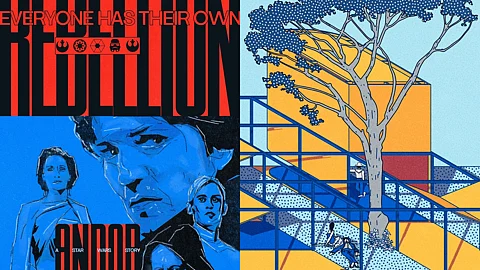
- HOMEGROWN WORLD
- #HGCREATORS
- #HGEXPLORE
- #HGVOICES
- #HGSHOP
- CAREERS
- ABOUT US
- CONTACT US

“I’ve always been fascinated by how the human mind behaves when it’s alone,” says architect and urban designer, Asad Hossen. “In those quiet moments, stripped of distractions, space becomes the only thing we can really communicate with.” This idea of space as interlocutor forms the foundation of Asad’s growing body of visual art, where architecture is not a background but a character, sometimes even a partner, in deeply personal narratives. In these illustrations, buildings hold us, speak to us, and reflect our inner worlds.
“I tend to think a lot — often about things that don’t necessarily have a place in the rational world of architecture,” he explains. This act of reflection finds its form in drawing, a medium he approaches not merely as creative expression but as a parallel mode of spatial reasoning. “The drawing series I’ve created so far are quite different from each other, but I think they share a common thread: a sense of nostalgia and loneliness,” he notes. This connection he taps into between the subject and their surroundings is what allows his visual narratives to feel so lived-in, and attuned to the nuances of solitude, intimacy, and estrangement.
While architectural practice demands structure, logic, and real-world responsiveness, illustration has become something of a counterbalance for Asad. “I daydream often, sometimes even in the middle of high-stakes meetings,” he admits. “Drawing allows me to capture those fleeting, often irrational thoughts and give them form.”
Asad's instinct is to shape space, even in drawings, as something that carries presence and emotion. In many of these works, anthropomorphising buildings or conjuring cities as interior worlds becomes a means of re-humanizing architecture itself. As Asad puts it, it's “...less about function or spectacle, and more about emotional weight. In a way it is about reclaiming architectural space; making it vulnerable, intimate, and sometimes even tender.”
In his series 'Objectum Sexuality', Asad explores buildings as intimate partners; something we can form emotional bonds with. It’s a way of looking at architectural design through the lens of affection, where the subject and the space are in visual embrace of each other.
In 'The Art of Section', he turns to domesticity, drawing surreal black-and-white illustrations where the house itself becomes a protagonist. Weird characters inhabit the different sections of a home, creating uncanny relationships between people and place. The architectural section — a classic representational tool in building design, is reimagined here as a theatrical stage for human absurdity and psychological depth.
'Imaginary Places to Do Insignificant Things', on the other hand, sprawls outward. These complex cityscapes, both dreamlike and exacting, contain lone figures performing the most minor of acts. Again, space dominates the scene, but not through monumentality. These are spaces imagined for that minor choreography of daily life which architecture rarely dignifies.
In Alternative Posters, Asad pays homage to the films, video games, and television series that have moved him the most by capturing the atmospheric essence of a story — whether that lies in a central character, a recurring motif, or an overall tone. For this, he treats typography as material and lets the distinct language of a film dictate its aesthetics through experimentation.
Cinema also lends its blocking technique to Asad's practice and infuences how his scenes are constructed. "It helps me figure out spatial relationships and point of view early on," he shares. Years of architectural training have made the construction of space second nature to him; there is an underlying design logic that governs how he layers, arranges, and composes. And yet, within that structure, there is always room for the unexpected. By introducing moments of whimsy or surrealism, he softens the rigidity of architecture, opening a doorway into the emotional dimensions of a given space.
Follow Asad here.
If you enjoyed reading this here's more from Homegrown:
Concrete Daydreams: Omkar Patil's Art Turns Mumbai Landmarks Into Objects Of Delight
Megha Gupta's Architecture-Inspired Ceramics Channel The Essence Of The Pink City
Chetnaa’s Geometric Abstractions Are Inspired By The Spirit & Architecture Of Delhi
